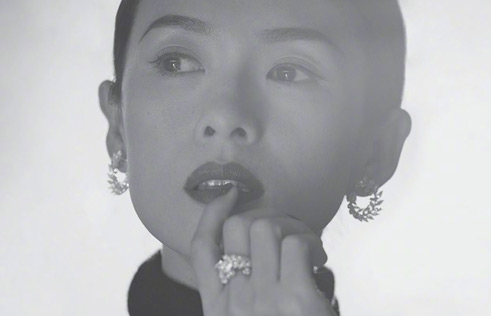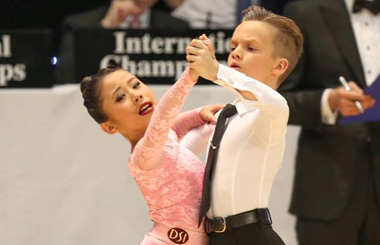Palace of north Tibetan-area—Dawu house
 |
At the end of last century, a revival of the Shangri-La tale generated a Tibetan-area touring boom. The 'Tibetan-area' refers to not only Tibet, but also a large number of Tibetan residences in the Sichuan Province which borders on Tibet. It contains mainly the Tibetan Autonomous Prefecture of Garze and Tibetan-Qiang Autonomous Prefecture of Aba. In both areas live generations of Tibetan people, with their attractive customs and life-style. Take a walk along the road in any area, like the Dawu County, and you'll find yourself surrounded by eye-catching and fancy houses. They are the "Dawu House," palaces of the North Tibetan-area.
The word palace doesn't mean necessarily the king's residence. It refers to the homes of ordinary Tibetan people from Dawu County. The county, at an elevation of 3km, is famous for its beauty and provinciality, and Dawu House makes it one of the most famous.
Dawu House is 'Beng-ke' in Tibetan, 'a house of wood.' The house has wood girders and pillars, and the rest of it is built mainly with stone, sand and earth. By 1980s, severe earthquakes shook the counties of Zhaggo and Dawu in north Tibetan-area, forcing people to quakeproof their traditional house-style. Now a mature building style has developed.
 |
A typical Dawu House, 2- or 3-storys with a height of 5m to 8m, is supported by bulky wood planks in traditional Tibetan patterns. Walls are built with superimposed sheet stones and earth, enclosing about 120-250 square meters for a normal house, and 350-450 square meters for a large one. The framework is crossed stake shaped in lunette for stabilization. Compared with patterns before the earthquake, thicker wood for pillars are used with a new jointed structure, drilling through floors in support.
Viewing from outside, the houses are L-shaped, saucer-shaped or square-shaped. Eaves and doors are colored with homemade dyestuff. The earth part of walls is painted white, the wooden part in maroon, and windows in polychrome drawing. The parapet is covered with shrubs and flowers, and fruit trees line the courtyard. You’ll be impressed by the color.
 |
 |
And what may impress you more is inside the house. Dawu Houses may look similar outside, but inside is a different story. The airing platform, typical rural houses, is located in different places according to the size of house, daylight conditions and owner preferences , as well as furniture and room-design. The ground floor of a house is generally used for storage or hoggery, and upstairs is where the whole family stays. There is a drawing room and worshipping hall in every house, the former for receiving guests and family gathering, and the latter for worshipping Buddha.
The drawing room has a circle of cushions aside the walls and a Tibetan-pattern table at the center. Guests and the family spent their time having tea and chatting here. To the west of the room is a pair of trunk beds resembling a put-you-up. A rich family may even have a chair-bed in their drawing room, which is large and has three sides of balustrade around it, all garishly sculpted to exhibit the greatness of the owner. Only a respected guest will be led to the chair-bed. And the worshipping hall is always lightened with gheelamp, keeping the Buddha figure inside and from time to time, some small religious activities will be held here.
 |
 |
What makes the Dawu House a palace is the sculpture and drawings on nearly the every interior surface of the house. Beginning in the 1980s, Dawu House ornaments have become more and more brightly colored and image-plentiful. Local craftsmen show their exquisite skills, and guests find themselves in a museum of Tibetan-painting. Traditional Buddhist figures and Chinese propitious images fly across the roof, entwine the pillars, hop onto windowsills and hide under corners. Even the furniture is covered with flower patterns and inwrought fabric. All of the figures and images have legendary origins or historical stories. Since the sculptures and paintings resemble those in Buddha temples, regarded as representing the best Tibetan arts and crafts, they are the center of the 'palace' in the everyday lives of ordinary Tibetan people.
To build a Dawu House, the owner will entrust a Lama—the Tibetan word for Buddhist abbe—or a Living Buddha to make an augury on the lucky day the project begins. Upon construction, relation and friends of the owner come and help. They use a lot of white fine stones to composite a beast caput on the highest wall of the house, in pray of breeding. On completion of the house a fire is started, and at a séance ceremony in the 9th month of Tibetan calendar every year, the owner brushes outer walls new and white to represent holiness and luck.
 |
 |
A completed Dawu House usually costs 200,000 to 300,000 yuan, and may reach a million if the owner can afford it. Most of the budget is spent on ornaments. Since the government has launched a policy on protection of wide wood, the cost will probably go even higher. According to travel notes of a tourist who visited an unfinished Dawu House completed four years ago, the sculpting carpenter there said he needed another 2-3 years. In other words, the house will take 7 years to complete. What a work!


















